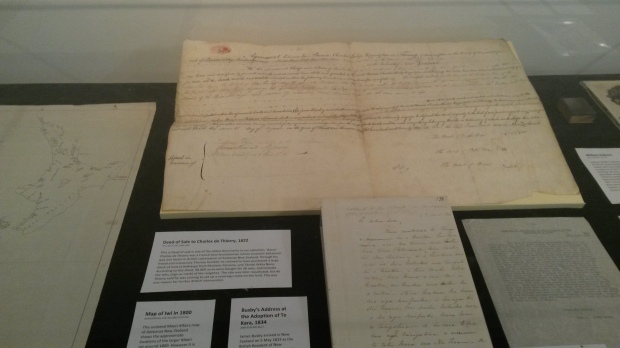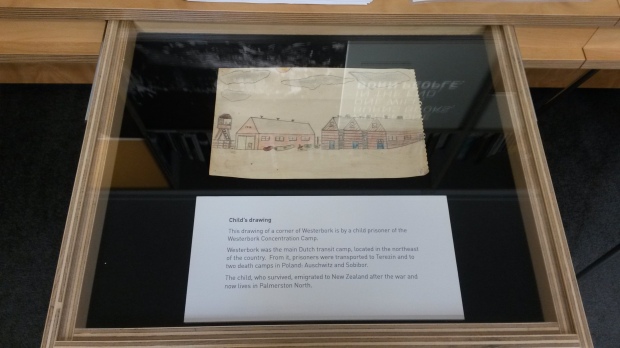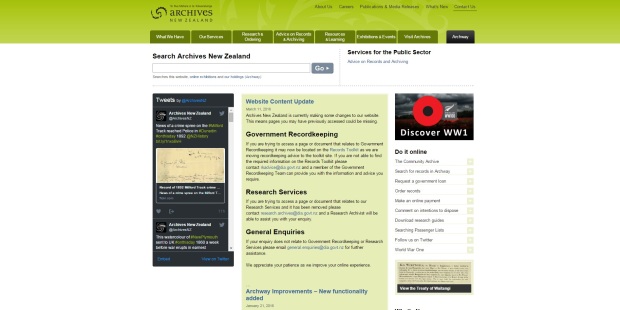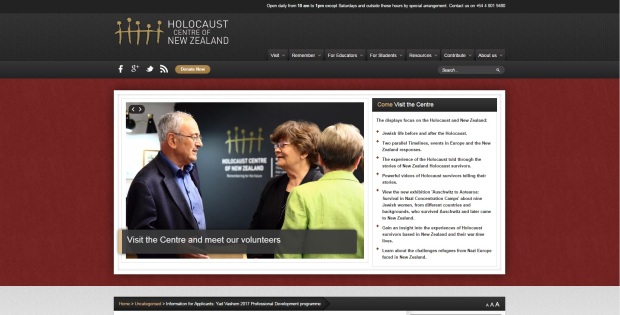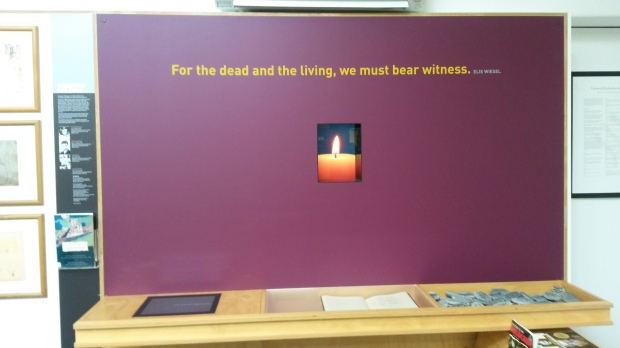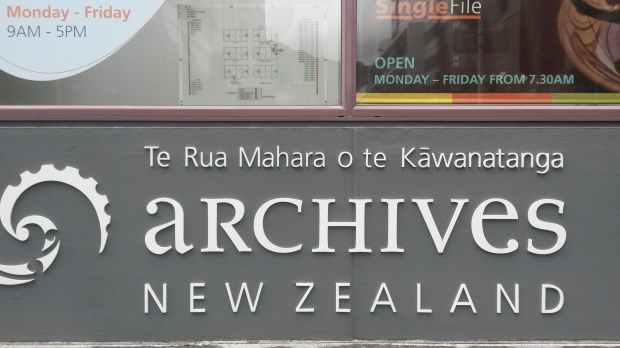
For site II, I went to Archives New Zealand; it is also known as Te Rua Mahara O te Kawanatanga in Maori. The archives are located on Mulgrove Street near government buildings such as the Parliament Building and the Wellington Railway Station. Archives New Zealand is responsible for housing government records; this includes regulation of information management in the public sector. I thought I would have trouble finding the building (myself being pretty bad at directions) but fortunately it didn’t take me long to see a large building with “ARCHIVES” on it. So I’d say it announced itself pretty boldly.

Plaques near the entrance

Stairway to reception
What do people – audiences, viewers, users, come here to do?
The main purpose of the building is the archiving of important government documents. Some of these documents are accessible for the public, such as marriage records from the 1800’s to the historical treaty of Waitangi. Other documents have restricted access and thus not accessible. I would imagine that the general public would come to the archives to view the Treaty of Waitangi as they have a museum like exhibit about the historic document; this is probably why there was a tour group near the entrance.
Government and civil workers would have a purpose of coming to the archives to view publicly restricted documents.
What kind of professional practices go on there?
Working within the Archives are people from various organizations and groups; these people can be family historians, academics, legal researchers, professional historians, and genealogists. They document the rights and entitlements and provide evidence of government activity.

Tour group meeting place
Does it display or exhibit “things” – what are these “things”? And for what purpose are they on exhibition, displayed, shelved, stored or archived?
The things that were publicly on display were some documents such as intention to marry forms from 1856 to 1881 and the famous treaty of Waitangi. The treaty of Waitangi, though a historical document, is still government property and for this reason, not displayed at Te Papa. The purpose of publicly displaying the treaty of Waitangi is to educate people on a pivotal part of New Zealand history and this is further illustrated by accompanying displays such as letters, pamphlets, maps and timelines.
The archives main purpose is to gather, store and protect a wide range of material such as original government documents, maps, paintings, photographs and films – this to ensure future generations can view and learn about the past and to preserve these important things.

Entrance to the Treaty of Waitangi Exhibit

Accompanying documents on display
What is its history?
In 1952, the Hope Gibbons building was destroyed by a fire in Central Wellington, causing the loss and severe damage of records such as public works, land surveys, labor and employment and more. In 1957 the Archives act was in place and thus creating the National Archives. Since February 2011 it has been part of the Department of Internal Affairs; however before that it was a separate government department. The Public Records Act of 2005 greatly expanded the role of the archives and the powers of the Chief Archivist. The organization now has a leadership role for record keeping throughout central and local government around New Zealand.
Is this Site staffed?
Yes.
Who works here? Who do you see? Who do you not see?
Government and civil officials/employee’s, archivists, and others I have mentioned on professional practices. I did see a few staff with key cards around their necks running around the building (I didn’t see many however), your typical receptionist near the entrance, and some others like me looking at public documents. In short; not a lot of people.

Floor plan within the elevatorr; most of those floors were restricted

Intention to marry forms
What do you get to see? What do you think might be behind the scenes?
There were reading rooms with cabinets of documents for public viewing, the treaty of Waitangi exhibit and walked past some meeting rooms on the 2nd floor but there wasn’t an awful lot to see. As expected from a government building, a lot of places were restricted such as some floors. I would imagine the things that would go behind the scenes within the archives would be the constant reviewing, recording, and cataloguing of important documents. Because some of these documents are so old, they may not be viable for public display as they could decay; they are most probably hidden within the archives safe and protected.

A timeline displayed in the Treaty of Waitangi Exhibit
Would you want to come back here?
Personally I am sitting on a fence in this; no because access to the majority of the building was horribly restricted and I didn’t get to see an awful lot. Yes (maybe?) because I would like to have a more leisurely look at the Treaty of Waitangi; I was never interested in New Zealand history or the treaty. But the fact that the actual document was housed in the building intrigued me. I may visit sometime when I am in the area but not in a huge hurry.
What is the branding, advertising or promotional material: catalogues, wall texts, displays?
Near the entrance way was a display that would give first time visitors bite sized information about the Archives New Zealand as well as a link to their official website should they want more information. Nearby was a display with a map of Wellington and brochures of various art galleries to visit, such as Te Papa.

Display of the Archives history and purpose

Map of Wellington and brochures of art galleries and attractions
Does its online presence give you wider access to information about it, its people and/or what it displays, stores, exhibits or its history?
Absolutely! The archives website have an extensive about us page, contact page and 4 million records that can be viewed through an online catalogue. This is done with the help of Archway, an archival management system that also acts as an online finding aid. Some documents you can find in the online archives are, for example, the 1893 Women’s Suffrage Petition, that can be downloaded as a PDF.
What other institutions or public spaces or “things” is it connected to?
The archives have branches in Wellington, Auckland, Christchurch and Dunedin.
Resources
Archives New Zealand. Department of Internal Affairs, n.d. Web. 14 Mar. 2016.
Wikipedia. Wikimedia Foundation, n.d. Web. 14 Mar. 2016.
